
Paspahegh Demonstration Garden: A Bridge to Harmony and Healing
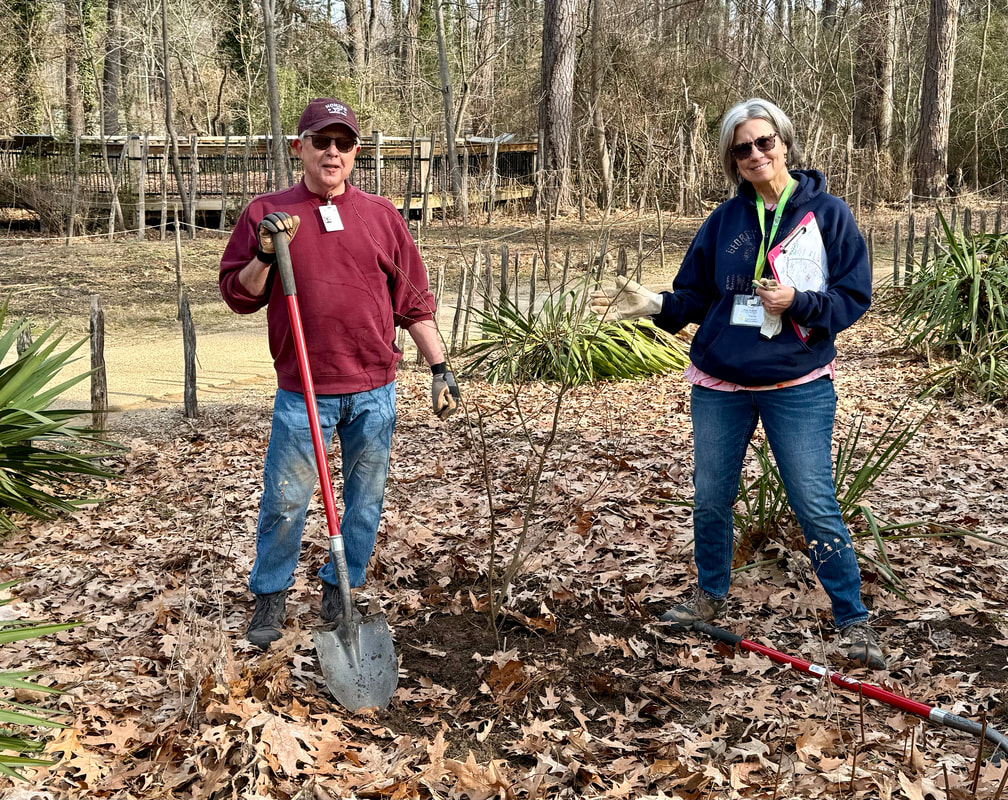
By Linda Hughes, VMN-Historic Rivers Chapter
Like our nation’s Native American peoples, Virginia Master Naturalists have a goal of building communities of people committed to harmony and healing our ecosystems.
In collaboration with the Jamestown-Yorktown Foundation (JYF), an educational agency of the Commonwealth of Virginia, Linda Hughes & Dan Foster, Historic Rivers Virginia Master Naturalists, established the Paspahegh Demonstration Garden in December 2024. The project will educate school groups & visitors on the plants used at “Paspahegh Town,” a Powhatan Indian outdoor interpretive site at Jamestown Settlement.
The Paspahegh were a tribe within the Powhatan Confederacy. Their territory was located on the James River near the English settlement of Jamestown.
Our goal was to show how indigenous inhabitants used wild & cultivated plants pre-1607 and during the early colonial years.
Like many indigenous cultures, the Paspahegh tribe considered plants to be gifts from nature. They used those gifts for food, medicine, building, hunting & ceremonies. They also “manipulated” their environment and encouraged useful plants in and around their campsites, including conducting controlled burns.
Our Demonstration Garden will reflect a naturalized woodland atmosphere. We’ve left fallen leaves & existing natives to benefit pollinators & wildlife, and to suppress invasive, nonnative plants.
Just as any pocket of native plants can serve as a bridge in a habitat corridor that supports pollinators, native plant demonstration gardens can be a steppingstone to build interconnected communities of people who are committed to harmony and healing our ecosystems, a practice valued by Native Americans.
We hope it may inspire others to transform their own gardens on sustainable, low maintenance landscaping practices and encourage dialogues around our own food & medicine sources.
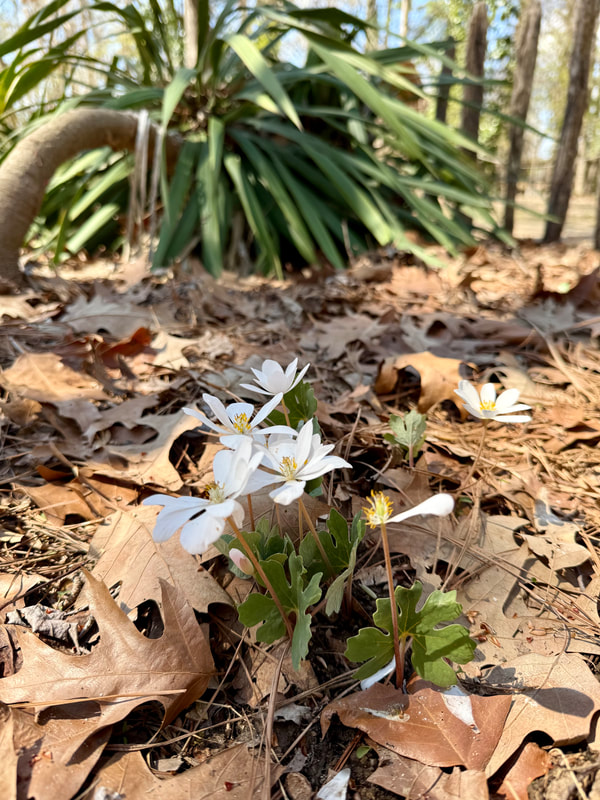
Sanguinaria canadensis (Bloodroot) — USES: Medicinal — widely used by Native Americans in blood purification, insect repellent; Utilitarian — dye for baskets, clothing & war paint. Yucca filamentosa (Yucca, Spanish bayonet) (in background) — USES: Food, utilitarian. Every part of these plants is useful. The young stalks, flowers & fruit are edible. The leaves can be processed into fiber, which is used to make sandals, skirts, string, rope, brushes, mats & basket starts. The sharp tips of the leaves can be used as needles. Roots used for soap. Both of these native plants existed on site. Additionally, we have transplanted another Yucca from elsewhere at Jamestown Settlement to our Demonstration Garden. Photo by Linda Hughes.

Juniperus virginiana (Eastern Red Cedar) — USES: Medicinal — berries steeped with wild ginger for shortness of breath; bark steeped for tea to treat Summer Complaint which occurs in summer caused by eating food contaminated by bacteria and seen typically in children. Dried leaves for cuts as antimicrobial; Ceremonial — wood in sweat lodges; utilitarian — wood for construction; Food — berries. This native plant existed on site. Photo by Linda Hughes.
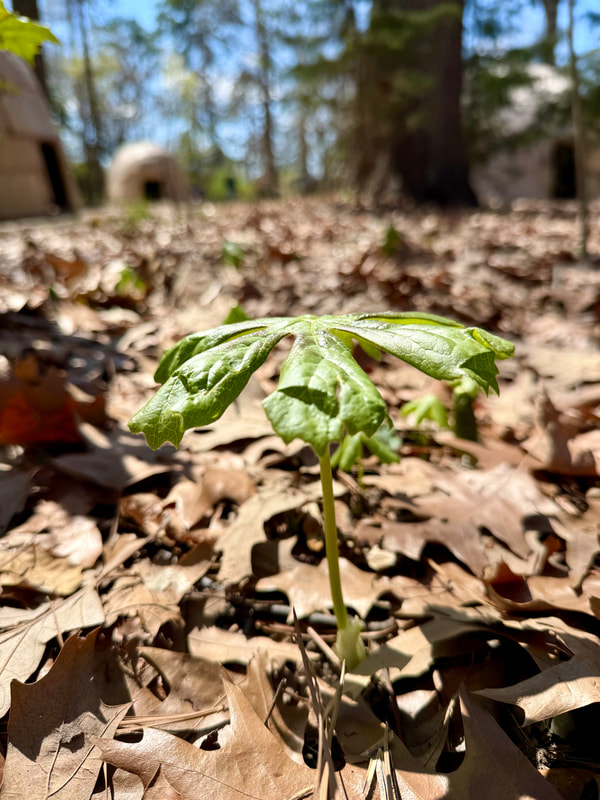
Podophyllum peltatum (Mayapple) — USES: Food — ate the ripe fruit; Medicinal — Insecticide, treatments for rheumatism, laxative, diarrhea, ulcers, sores, liver & bile problems, hemorrhoids, headaches, diuretic, whooping cough, cholera, pneumonia, problems of male & female reproductive tracts; as a purgative, and for anthelminthic (worming) purposes. Treat forms of cancer such as ovarian & skin cancer. Reportedly, individuals of some Indian tribes even used rhizomes of this plant to commit suicide. This native plant existed on site. Photo by Linda Hughes.
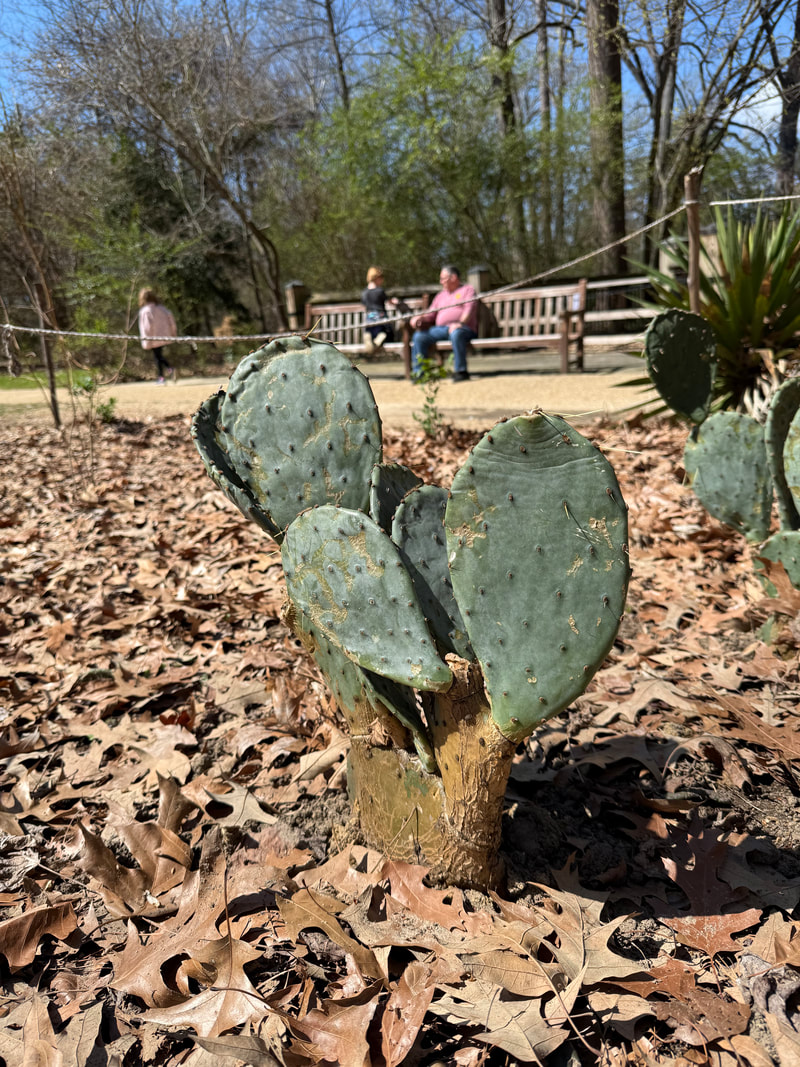
Opuntia mesacantha (Southeastern Prickly Pear) — USES: Food – Eaten fresh & raw. Some tribes made candy & chewing gum from the fruit. Excess fruit was dried & stored for winter. Medicinal – Nopales were split & applied to open wounds on humans & animals. Roasted nopales were held on the side of the neck or below the chin to treat rheumatism & mumps. Utilitarian – Spines from prickly pear pads used as needles. The deep reds & purples of the fruit were extracted as juice and used to dye textiles. We transplanted this Prickly Pear from elsewhere on the Jamestown property. Photo by Linda Hughes.
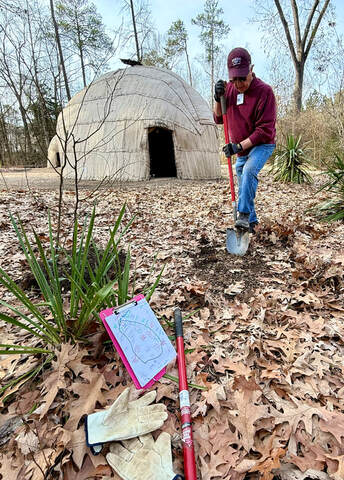
So far, our team has identified and mapped Invasive and Native plants at the site using the Flora of Virginia app & iNaturalist. We’ve confirmed invasive plant identifications with Blue Ridge Partnership for Regional Invasive Species Management (PRISM), and fact sheets from the Virginia Department of Forestry and Virginia Department of Conservation and Recreation.
We’ve also developed an Invasive Management Calendar with multiple control strategies, including engaging JYF’s licensed pesticide applicators for herbicide control of invasives in places where physical removal isn’t feasible, to avoid soil disturbance, and minimize re-growth.
Additionally, we investigated land use history to check for lurking invasive seed beds and conducted a soil test.
Our big deliverable, however, was researching historically used natives suitable for our site’s part shade conditions. Dan & I aimed for an historic basis for determining the plant usage based on archaeological findings nearby, oral tradition from Virginia’s state & federally recognized tribes, and descriptions & illustrations recorded by English colonists in the 17th century.
Our Jamestown-Yorktown partners Bain Schultz, landscape supervisor & Carol Weirs, historical interpreter, contributed to the list and shared it with the regional Tribal Council. A member of the Monacan tribe also reviewed it (see sidebar).
With our JYF partners, Dan and I etched out a very rough scaled planting plan to guide our efforts:
- Loosely divided the garden into sections: Edible, Medicinal, Ceremonial & Utilitarian.
- Allowed for natural foot paths for maintenance & regular invasive removal.
- Used onsite logs & rocks to break up the eyeline, prevent erosion, establish pedestrian boundaries, and create pockets for planting.
We began planting in March and will continue through early May and again in the Fall. In addition to buying some plants locally, we transplanted plants from areas around JYF lands. We’ll maintain the demonstration garden with regular watering and invasive removal.
Currently, the team is investigating signage to fit with the historical context of Jamestown Settlement. A native landscape may look weedy and unmaintained during its first year or two while plants are maturing. A Pollinator-Habitat-in-Process sign may educate visitors that native plants put their energy into growing deep roots during their first years, rather than into blooming paying off in long-term resiliency.
Signage can also help people understand that a “messy” winter garden doesn’t mean it’s neglected. “Leaving the leaves” provides winter forage & nesting sites. For insects, birds, and other wildlife they provide essential host plants, nesting materials, and nectar.
The team is also considering QR codes on signs linking to more in-depth information. The challenge is how to make this work with a “Living History Museum” atmosphere.
To further help guide the Historic Interpreters, we’re creating a detailed plant factsheet.
To work out challenges, our vision will be implemented in phases over several growing seasons. Over time, we’ll expand our landscape area as knowledge & resources grow.
Building welcoming & inclusive spaces for people of all abilities, race, ethnicities, and socioeconomic status is one of the core values of Virginia Master Naturalists. So, following in the footsteps of the Native American people, the Paspahegh Demonstration Garden’s goal of building communities of people committed to harmony & healing our ecosystems is a valuable starting point.
Paspahegh & Monacan: Tribes with Much in Common
The Paspahegh people were a part of the Powhatan autocracy and spoke the Algonquin languages. The Monacan peoples were Siouan-speakers who were originally from the western part of the country and moved east to the Blue Ridge Mountains’ Piedmont area down to the Fall line at Richmond.
The two First American “tribes” traded with each other and some accounts (English) say they occasionally skirmished. But they had much in common: Similar dome-shaped village structures, getting from the wild (berries, nuts, animals), and domesticating a wide variety of plants for food. Their semi-permanent villages were also on the James River, though the upper portion. Many of the plants they used from the wild and domesticated at their village were the same and for similar purposes (food, medicine, ceremonial & utilitarian).
In November, Linda met Victoria Ferguson, Program Director Solitude, Presidential Ambassador to Native Nations, Office for Inclusive Strategy and Excellence at Virginia Tech. She is a member of the Monacan tribe and author of “Food Practices of Eastern Woodland/Eastern Siouan of the Interior Mid-Atlantic: Living Off the Land, published in the Quarterly Bulletin of the Archaeological Society of Virginia, June 2024. They talked about our Demonstration Garden project at Paspahegh Town. The Monacans had a similar-type re-creation at Natural Bridge.
Ferguson suggests the coastal tribes probably grew a different corn than her people, likely the Virginia Gourd seed variety (still available). She also said the Paspahegh people had access to Tuckahoe (Peltandra virginica), a plant of the arum family known as green arrow arum, and her people did not.
Did you know?
Besides attractive non-native plants, the Europeans also brought tough and persistent weeds—dandelions, thistles, plantain, nettles, nightshade & some sedges? These wreaked havoc on the Indians’ domesticated plants. These non-native plants came to America mixed in with hay & grain for livestock and then were deposited in the soil through manure. Some botanists estimate that 258 of the approximately 500 weed species in the United States were imported from Europe. Yes, America’s first invasives!